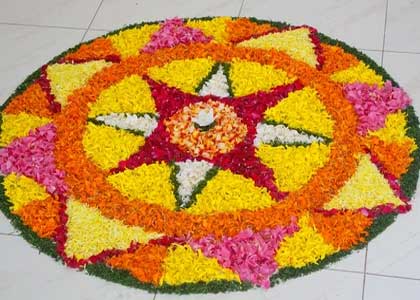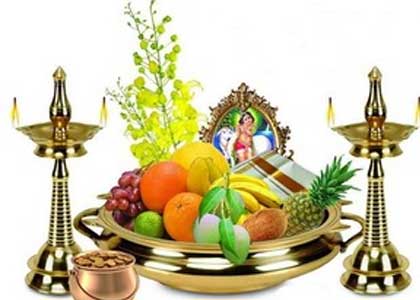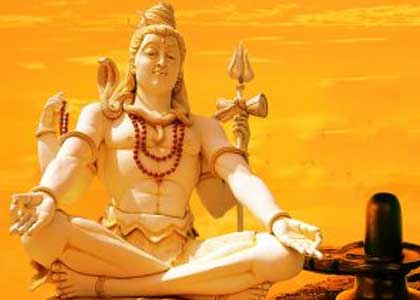Fairs and Festivals
Onam| Vishu | Navarathri| Christmas | Easter | Ramadan| Eid-Ul-Fitr | Eid-Ul-Zuha | Milad-Ul-Nabi | Muharram | Boat Races| Erumeli Pettathullal | Vaikathashtami | Ezharapponnana | Puthuppalli Chandanakkudam
Among the innumerable festivals that take place all over Kerala, almost all the prominent ones are connected with religious institutions. The 'Utsavams' of the Hindu temples and the 'Perunals' of Christian and Muslim churches are of utmost importance to the community. There are certain festivities like the boat races, which originated to commemorate religious events but subsequently turned out to be events of social importance
The colorful mosaic of Kerala festivals and fairs is as diverse as the land, is an expression of the spirit of celebration, that is an essential part of the State. Observed with enthusiasm and gaiety, festivals are like gems, ornamenting the crown of Kerala tradition and culture. Round the year, the fests are vibrant interludes in the mundane flow of life in Kerala.Every season turns up new festivals, each a true celebration of the bounties of nature. The festivals exhibits an eternal harmony of spirit. Packed with fun and excitement, festivals are occasions to clean and decorate houses, to get together with friends and relatives and to exchange gifts.New attire, dance, music and ritual, all add to their joyful rhythm. It is a time for prayer, for pageantry and processions.....a time to rejoice.
The important fairs and festivals in the state are:

Onam-The National Festival of Kerala
Kerala's most important festival, honouring King Mahabali, a mythological king of ancient Kerala, whose period was reckoned as the golden age in the history of the state. He was the embodiment of virtues, goodness, so was his regime which was marked by equality and harmony among people.The golden age was abruptly ended when Mahabali was unseated by Vamana, the dwarf incarnation of Vishnu. However, Vamana was lenient to accede Mahabali's request that he be permitted to visit the land and his people once a year. The time allowed for the visit was the 10th lunar day in the month of Chingam, (first Malayalam month, August- September). His visit is celebrated as Onam which sync with the harvest season in Kerala.The 10-days festival is supposed to begin from the lunar asterism Atham and culminate in asterism Thiruvonam.
Onam is marked by festivity. Keralites bash up the day. Ornate flower carpet is laid in the front yard of every house. Special prayers are offered in temples. Delicious dinner is the USP of Onam celebration. Traditional food is served on plantain leaves. An emotional string is attached to this festival since Keralites living elsewhere in the world make it a point to reach their native place to join the gala.

Vishu, the equinox, is one of the important festivals of Kerala. It is in the middle of April. According to the Hindu traditional Malayalam calendar, the New Year begins this day. 'Kani Kanal', the auspice first sight at the beginning of the year, is the main ritual. In the wee hours of Vishu day, the lady of the house arrange the Kani. Coconuts, fruits, cereals, a mirror and Konna flower are placed in big Bronze pan before the garlanded icon of Krishna. Oil lamps are lit around the deity. Before dawn the master of the house is ushered to sight of the Kani, the auspice 'once in a year' sight of the Lord, amidst fruits, food and finance looking into the future, followed by the rest of the family and Children who are brought blind folded from their beds to the site of Kani.The eldest in the family gives silver coins to youngsters and bless them. It is believed that the auspice sight of Kani and receipt of money by dawn, the first thing in the New Year bring happiness and prosperity fo the whole year. In Kerala the Kani of the idols in Guruvayur, Ambalapuzha and Sabarimala temples are considered much more auspicious.
This is the Durga Puja of Bengal, Dussera of Bombay, the Saraswati Puja and the Ayudha Puja of the south. It is festival of 9 nights consummating on the tenth day morning of which the last three days, eighth day Durga Ashtami, NIneth Mahanavami and Tenth Vijaya Dasami are observed with all gaiety. By dusk on Durga Ashtami, all Hindu houses prepare a special altar for conducting offerings for Saraswati, the goddess of learning. This is called 'Puja Vayppu'. It consist in decorating a room splendidly, illuminating it with many lights and arranging on a raised altar in the middle of the room, filled with offerings and sacraments to Saraswati, the goddess of learning. Books and weapons of various kinds are tastefully arranged and a picture or image of the goddess placed in the centre. The worship then commences with accompaniment of music. This goes on night and day till the morning of the third day, when the 'Puja Eduppu', consummation of the Puja takes place. After the performance of special religious service, the arrangements on the platform are formally removed and the Puja ends. Then follows the 'Vidyarambham' or the beginning of learning. On the last three days of Puja, all sorts of learning are kept in abeyance; no one will read or write or do any handicraft with any material. Every sort of business is at a stand still. At the consummatiuon of Puja, work commences. During the Puja Vayppu people generally fast.

Mahasivarathri
Mahasivarathri the great night of Siva is celebrated in Kumbam (February- March). It commemorates the day on which Lord Siva consumed the deadly poison Kalakuta to save the world from destruction. The day is celebrated by offering special pooja and ablutions of idols and the presentation of cultural programmes in all the Siva Temples. The Annual Sivarathri Festival held on the banks of Periyar at Alwaye is one of the most spectacular local festivals of Kerala, which attracts thousands of pilgrims from all over the State. It has been compared to the Kumbamela at Prayag.




